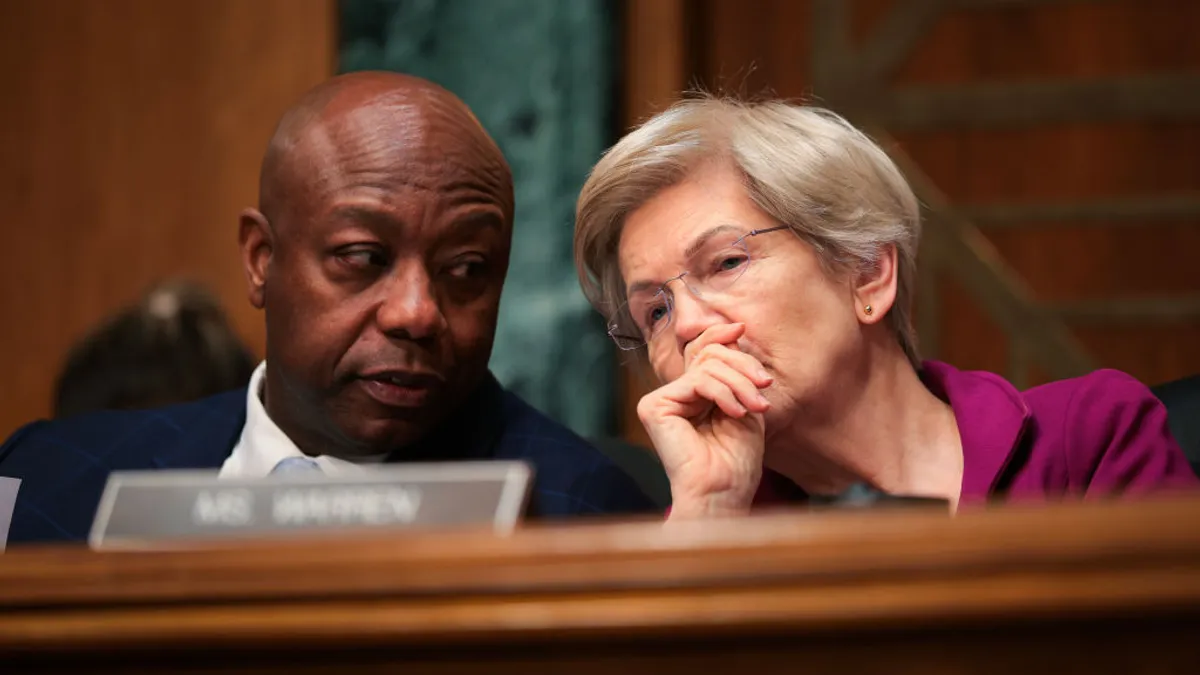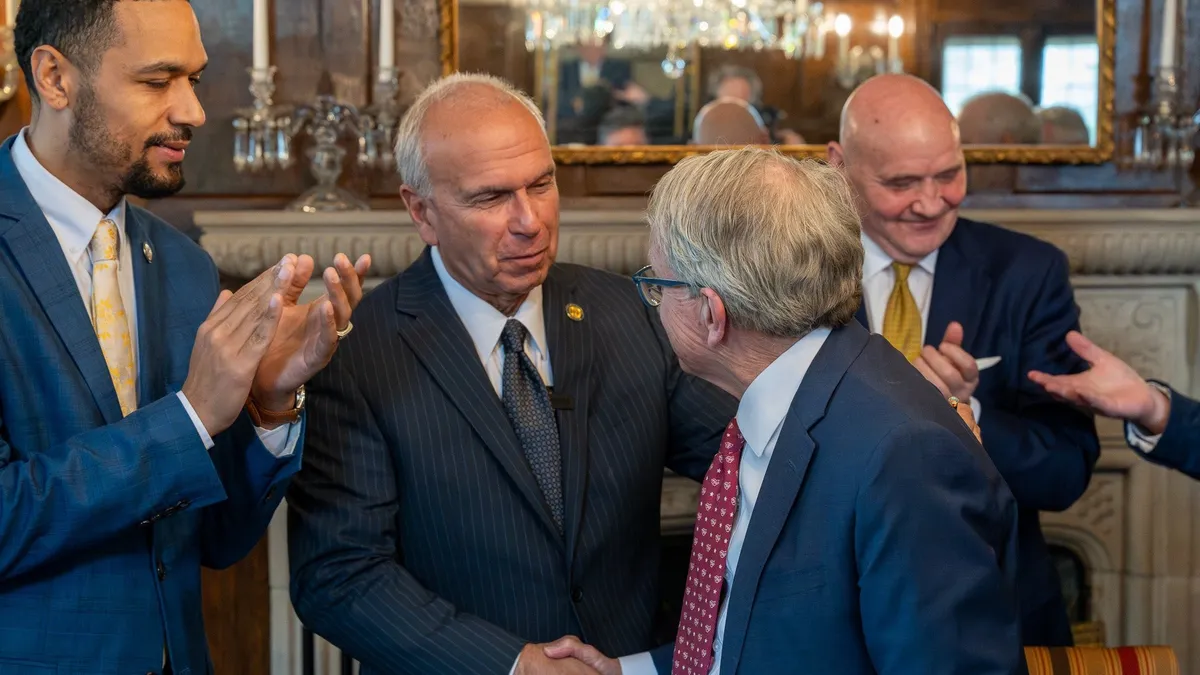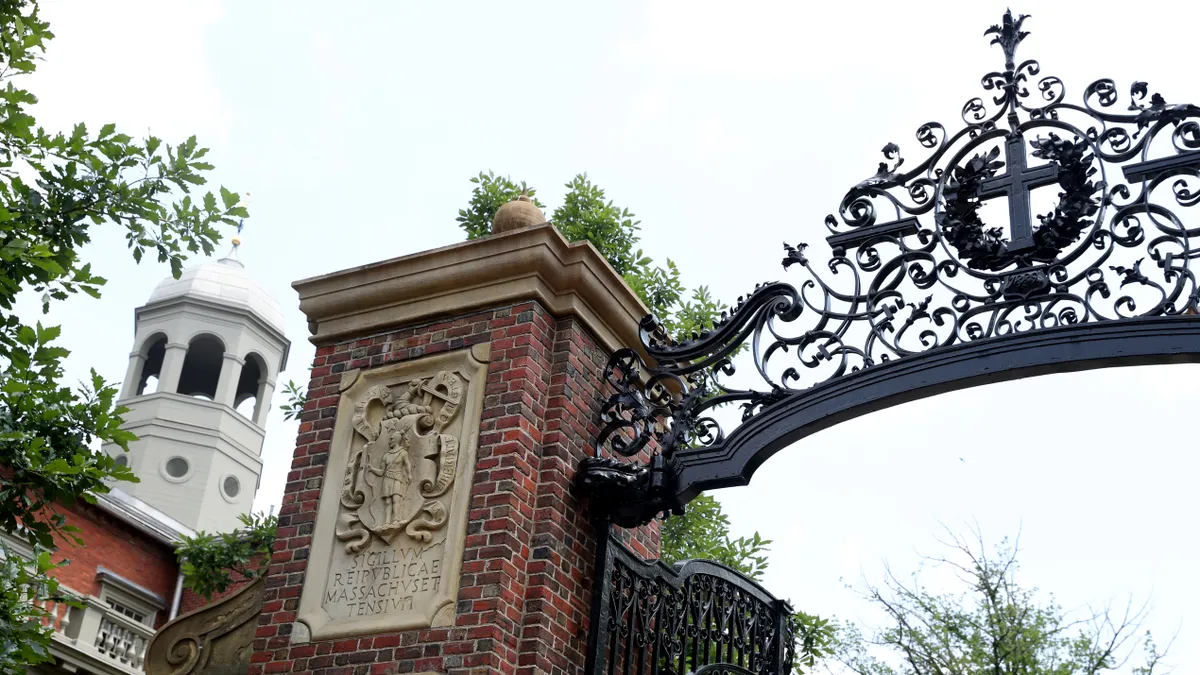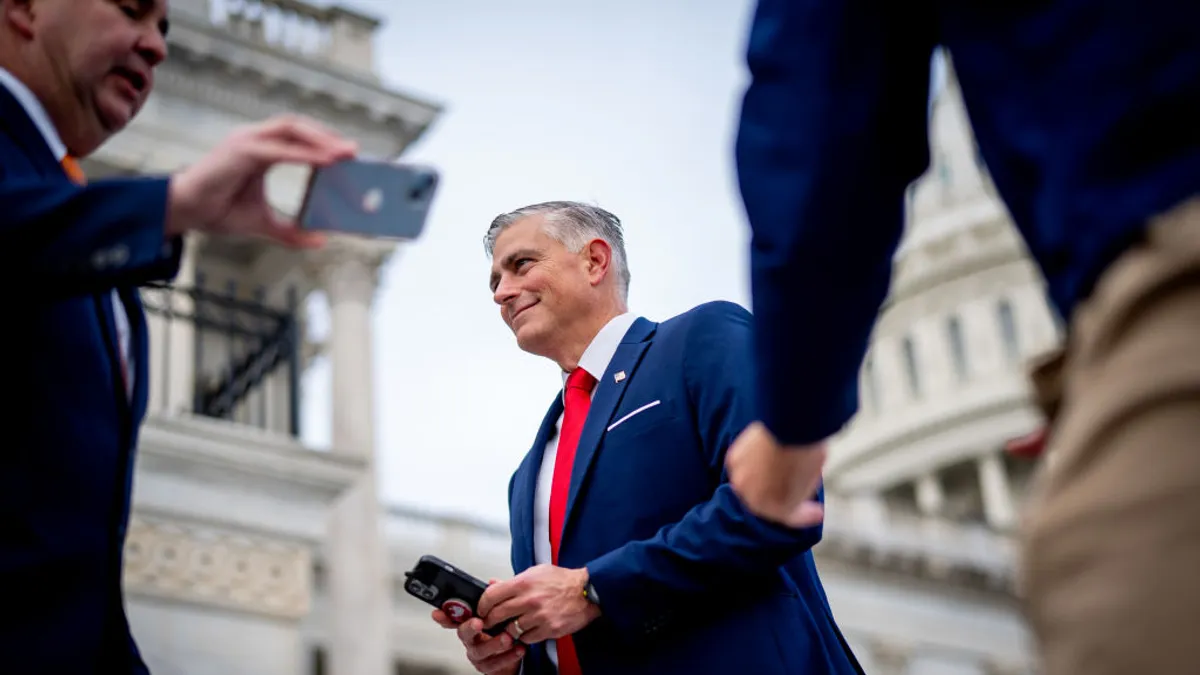News last month that Hollins University, a women's college, had loosened its admissions policies for transgender students received little fanfare.
Local and national press gave the announcement small write-ups but did not document any backlash. No angry alumni emerged to protest. No incensed benefactors threatened to withhold donations.
In short, no one, at least publicly, seemed to care that a historically all-women's institution in southwestern Virginia would move to allow students who enrolled at the university as women, but have since transitioned to a male identity, to graduate.
"I was very surprised by the low level of conversation on this," said Alexandra Trower, chair of the college's board of trustees in an interview with Education Dive. Hollins already admitted trans women who met certain criteria.
This scenario is a far cry from the landscape half a decade ago, when women's colleges faced a reckoning over their admissions practices. In 2013, Smith College, a women's liberal arts school in Massachusetts, turned down trans woman Calliope Wong because her FAFSA application at the time listed her as male.
Wong's rejection spurred queer activists to lobby women's institutions to change their policies. Many of the more than 30 women's colleges still operating in the U.S. eventually opened admission, at least partially, to gender-nonconforming applicants, including nonbinary students.
The first women's institution to do so was Mills College in 2014. Smith followed a year later.
Such policy changes no longer lead to the media explosions of six years ago. So it might go unnoticed that admissions practices for gender nonconforming students remain vastly inconsistent among women's institutions.
Women's colleges now largely admit trans women, but very few accept trans men. Some of them profess to accept students who don't identify with a single gender, but only if they label themselves female.
These admissions criteria aren't always publicly posted, leaving trans students floundering for answers. This compounds problems trans people already endure, say researchers of LGBTQ issues. About one-fourth of students in college or vocational school who were out as or perceived to be transgender reported being verbally, physically or sexually harassed, according to 2015 data from the National Center for Transgender Equality. About 17% of trans students said they left a K-12 school because of severe mistreatment.
Limitations persist
Women's institutions have seen enrollment surges in recent years that college leaders have partially attributed to a renewed interest in social activism, inspired by the Trump administration's actions against trans students. The Education Department rolled back certain educational protections in 2017. And so women's institutions, with their history of embracing marginalized groups, have become attractive to gender nonconforming applicants.
"Unfortunately, this perception may be somewhat misguided," wrote Oren Ganor and Elizabeth Boskey, two researchers at Boston Children's Hospital, in a study published recently in the Journal of LGBT Youth. They noted that trans students' access to women's colleges "may be limited based on the sex on their birth certificate or whether they have completed certain aspects of a gender transition."
At certain institutions, such as Converse College in South Carolina, women who transition and identify as male while enrolled can't graduate, as was the case at Hollins.
Hollins' new rules allow trans men to graduate who enrolled at the university as women. Previously if trans men legally changed their name, took hormones or underwent surgery to match their gender identity, they would need to transfer.
Jeffrey Hodges, a spokesperson for Hollins, said the college never asked any students to transfer under the previous policy. But there is "no way to know definitively" if students chose to leave on their own because of the old rules, he said.
Trans women were already eligible for admission at Hollins. Under the new rules, they no longer need to prove they surgically transitioned.
"We're living in a changing world," Trower said. "We are a women's college. Our mission is to help educate women and the definition of being a woman is changing."
But Hollins didn't go so far as to open its doors to nonbinary applicants, nor would it consider trans men if they applied. As Trower said: "Our mission is to educate women and prepare them for a life to be ready to do great things. In order for us to reaffirm our commitment to be a women's institution, we felt it was important (for) students who come to Hollins to identify and live as a woman."
"We're living in a changing world. We are a women's college. Our mission is to help educate women and the definition of being a woman is changing."

Alexandra Trower
Chair, Hollins College board of trustees
Hollins and some other women's colleges are based in the conservative south, making them less likely to adopt these policies, Genny Beemyn, coordinator of the Trans Policy Clearinghouse for LGBTQ advocacy group Campus Pride, told Education Dive. Other elite women's colleges are located in New England, a more progressive area.
About a third of women's colleges are also religiously affiliated, according to Boskey and Ganor's research. These institutions might accept funding from their respective churches and may be disinclined to risk it by adopting progressive policies, Beemyn said.
Recent graduates of women's colleges haven't accrued the same sort of wealth as alumni from the 1950s and '60s, Beemyn said. Administrators would likely pay attention to the wishes of these affluent donors with conservative leanings, they said.
"Alumni services are concerned changes might alienate their funding base," Beemyn said.
Bigger changes
Mills administrators don't have as many worries. It admits nonbinary students, and officials have touted the student body and its alumni base as highly progressive. It's also based in the vastly liberal territory of Oakland, California.
The year before the college began admitting trans students, leaders there compiled an in-depth report about the harassment and other barriers trans students face, writing that "Mills (should) create a climate in which transgender and gender fluid students are not seen as exceptional cases but are viewed as part of the core student constituency."
Mills officials recommended using gender-neutral language in their campus literature, training faculty in trans issues and adding spaces specifically for LGBTQ students.
The college's mission of inclusivity has persisted five years later, Mills' President Elizabeth Hillman told Education Dive. When she arrived at the college in 2016, the governing board and college leaders were already taking steps to highlight how Mills accepted gender-nonconforming students, Hillman said.
When introducing themselves on tours of the campus, student ambassadors use their gender pronouns, Hillman said.
But communicating the mission of a women's college that accepts genders beyond just female has challenged institutions, she said. Leaders at these colleges straddle the historical purpose of women's institutions, which emerged in the mid-19th century to afford women opportunities in a space from which they previously had been excluded.
Men's colleges, of which there are far fewer, have also grappled with questions of gender and inclusivity. Morehouse College, a historically black men's institution, announced this year it would admit transgender men in fall 2020.
"Our understanding of gender has evolved," Hillman said. "And women's colleges have drastically changed over time. They're not finishing schools, they're not classical educational spaces now, they're not racially exclusive. The gender identity piece is part and parcel of these changes."





















